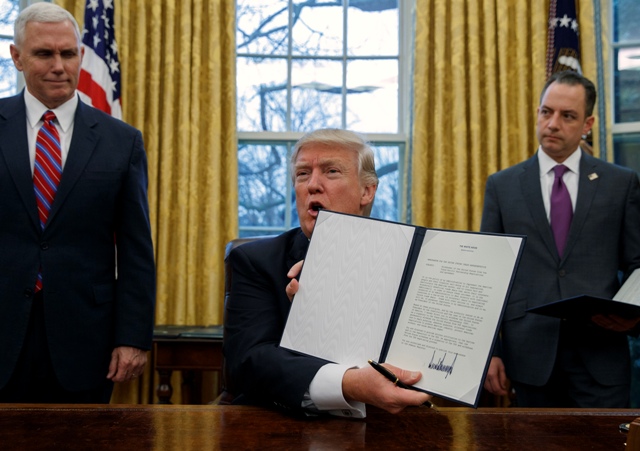Trump is chipping away at Obama’s legacy, one executive order at a time.
Charting a new American course abroad, President Donald Trump withdrew the United States from the sweeping Trans-Pacific Partnership on Monday, using one of his first actions in office to reject a centerpiece of Barack Obama’s attempts to counter China and deepen US ties in Asia.
Trump’s move on trade aimed to fulfill a central campaign promise.
Trump planned to make jobs and the economy the focal point of his first few days in office. He has repeatedly cast the 12-nation trade pact — which was eagerly sought by US allies in Asia — as detrimental to American businesses.
“Great thing for the American worker that we just did,” Trump said in brief remarks as he signed a notice in the Oval Office.
The Obama administration spent years negotiating the Pacific Rim pact, though the mood in Washington on trade soured over time. Obama never sent the accord to Congress for ratification, making Trump’s actions Monday largely symbolic.
In addition to his executive action on TPP, Trump signed memorandums freezing most federal government hiring — though he noted an exception for the military — and reinstating a ban on providing federal money to international groups that perform abortions or provide information on the option. The regulation, known as the “Mexico City Policy,” has been a political volleyball, instituted by Republican administrations and rescinded by Democratic ones since 1984.
In his discussions with executives, Trump said that he would impose a “substantial border tax” on companies that move their manufacturing out of the United States. He reiterated his campaign pledge to lower taxes for companies that stay in the US, as well as for the middle class, “anywhere from 15 to 25 percent,” although he has not been clear on how he intends to make up for lost tax revenue.
He said of his incentives for businesses, “All you have to do is stay.”
By: AP



